14. Shutter Island (2010)
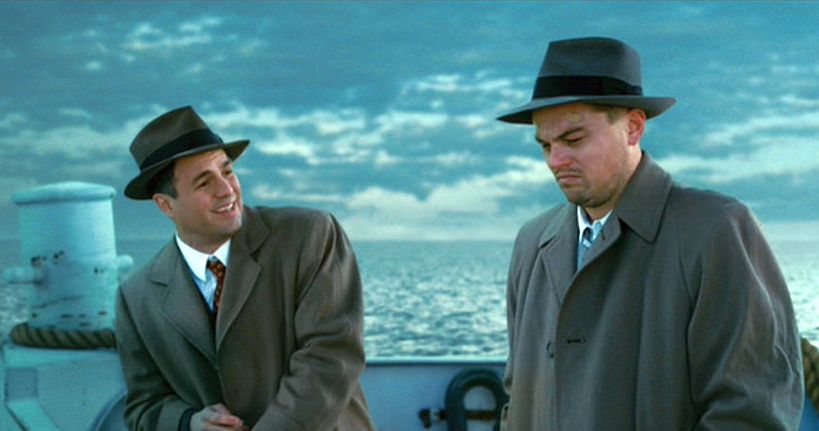
Martin Scorsese’s neo-noir psychological thriller, based on Dennis Lehane’s 2003 novel of the same name, follows U.S. Marshal Edward “Teddy” Daniels (Leonardo DiCaprio) and his new partner, Chuck Aule (Mark Ruffalo) who are investigating the Ashecliffe Hospital for the criminally insane on Shutter Island after one of its patients – Rachel Solando, who was incarcerated for drowning her three children, goes missing. Their only clue is a Solando’s cryptic – “The law of 4; who is 67?”
The lead psychiatrist, Dr. John Cawley (Ben Kingsley), refuses to turn over records, and states that while they have access to the hospital, Ward C is off limits, and the lighthouse has already searched by other police officers.
Daniels starts to have Disturbing nightmares about his dead wife, Delores (Michelle Williams) and begins having severe migraine headaches from the hospital’s atmosphere. His wife was killed in a fire set by Andrew Laeddis, a local arsonist, who may also be on the island. Daniels soon discovers that all the patients are being experimented on with psychotropic medication and some are even forced to have trans-orbital lobotomies in the lighthouse, in an attempt to develop mind control techniques.
Set in 1954, this period piece is heavily inspired by Hitchcockian thrillers, film noir and very low-budget 1940s zombie movies horror, as well as the classic film “The Cabinet of Dr. Caligari”.
This psychological parable requires multiple viewings to be fully appreciated. Its plot twists, story structure, and ominously thrilling visuals are all evidence for Scorsese’s masterly demand to evoke shuddering fear.
13. Eternal Sunshine Of The Spotless Mind (2004)
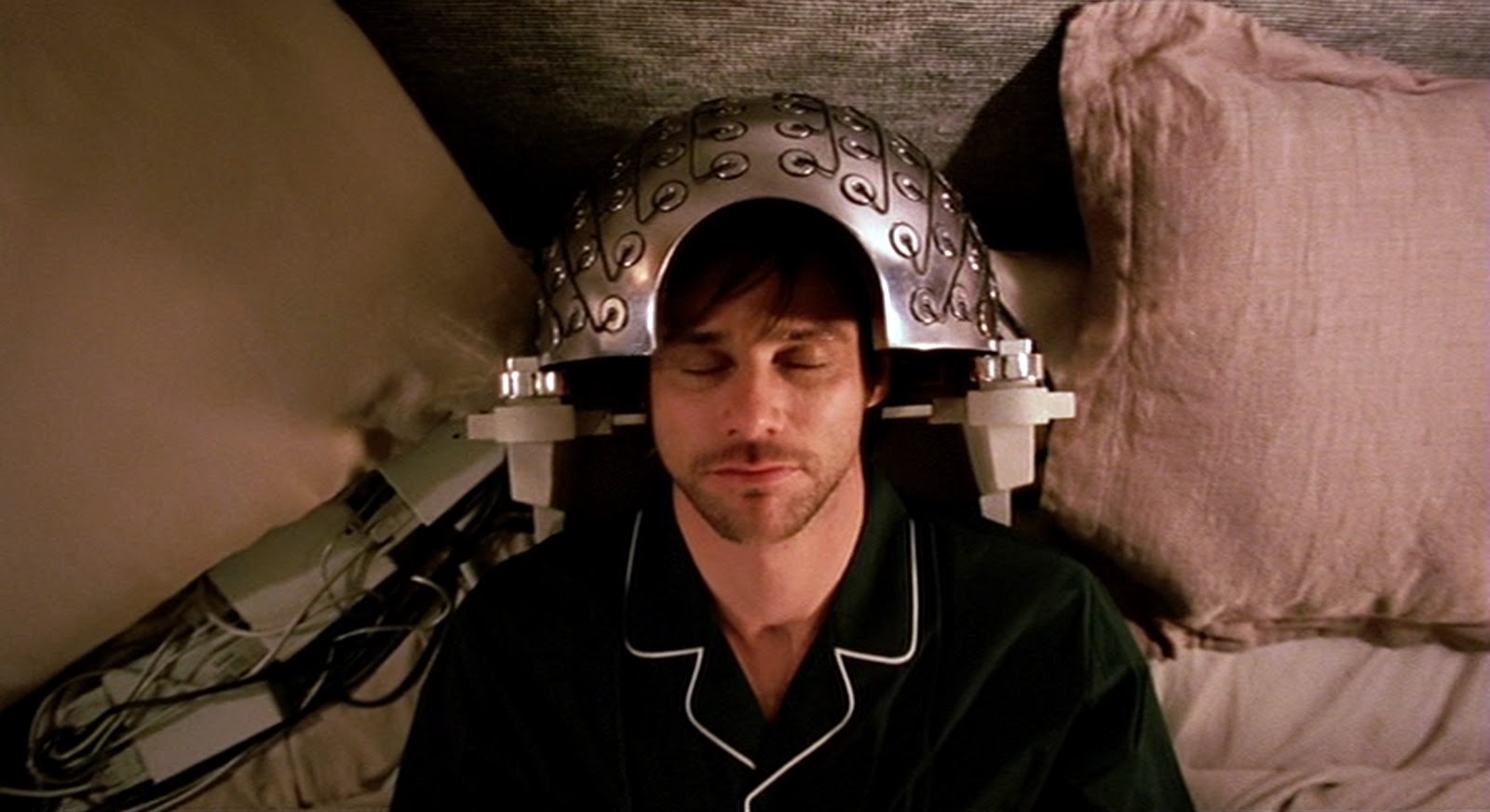
Michel Gondry’s romantic science-fiction comedy-drama, written by Charlie Kaufman, is a non-linear labyrinth that follows an estranged couple – Joel Barish, a shy (Jim Carrey) and Clementine Kruczyniski, the free spirit whose hair colour constantly changes and shifts along with her moods. The story coils back upon itself, redefining what came before and what follows after.
The film takes place in a parallel reality where there is a scientific procedure that can eradicate whole fields of memory of a particular event or person. The company, Lacuna Inc. is advertised as being incredibly prosperous, but it actually only consists of Dr. Mierzwiak (Tom Wilkinson) and his team of assistants: Stan (Mark Ruffalo), Patrick (Elijah Wood) and Mary (Kirsten Dunst) and all their mistakes and complications, both personal and professional.
The couple are unknowing frequent visitors of the establishment; eliminating each other from their memory until they meet again and re-fall in love. The procedure, while not strictly in its experimental stage, gets troublesome and dangerous, with its risks being unexplained to the patients; and hence is included.
Driven by Charlie Kaufman’s cerebal, imaginative and deliberately disorientating script and Michel Gondry’s equally twisty direction that seeks to discover new ways to portray the abstract, the conceptually complicated, hybrid-genre film manages to convey dense emotions, baffling beauty and existential drama effortlessly.
It has gained cult status, as well as numerous awards including BAFTAS, Golden Globes and an Academy Awards for Best Original Screenplay for Kauffman, Gondry and Pierre Bismuth.
12. Open Your Eyes (1997)
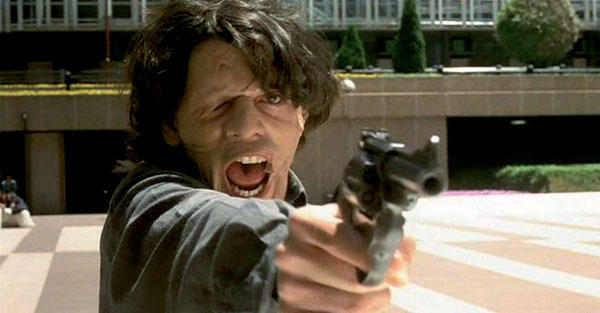
This Spanish psychological thriller blends the lines between reality and fantasy. Co-written, co-scored and directed by Alejandro Amenábar, his film tells the story of a good looking 25-year-old man, César (Eduardo Noriega) who becomes disfigured after a car accident caused by his obsessive ex-lover Nuria (Najwa Nimri).
The story is mainly told through flashbacks which are narrated by the present, prosthetic-mask wearing César who is describing his memories to his psychiatrist Antonio (Chete Lera) while he is in prison for some mysterious reason.
César’s vanity is ruined, his crush, Sofia (Penélope Cruz), the girlfriend of his best friend Pelayo (Fele Martínez) both become awkward as to how to act around him, especially since César seems to constantly test them by going too far.
However, his life soon takes a brighter turn as Sofia helps him through his tough transition but it soon crumbles apart as the reason as to why he is in prison in the present is revealed. An incredibly complex film that would be spoilt if the reason as to why it is on this list is explained, the story unravels on into itself as the characters become self-aware.
An American remake entitled “Vanilla Sky”, directed by Cameron Crowe, was released in 2001, with Penélope Cruz reprising her role.
11. Jacob’s Ladder (1990)
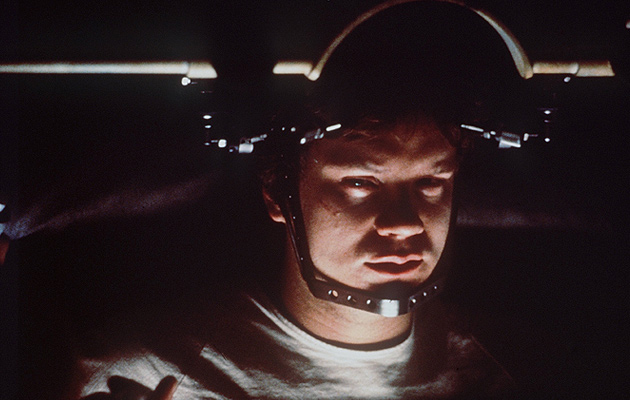
Adrian Lyne’s psychological horror follows Jacob (Tim Robbins), a Vietnam veteran whose mysterious experiences during the war slowly tear him apart. Jacob is left ruminating feelings of confusion, despair and severe anxiety caused by his paranoid hallucinations and bizarre flashbacks.
He is nearly run down by a subway train, faceless, vibrating figures follow him. He is increasingly tormented by disturbing experiences; locked subway exits, faceless vibrating demons, a car tries to run him down, and the only doctor who could help him is killed in an automobile explosion.
He seeks to discover what triggered his mind to lose control of itself, especially after meeting a former brother in arms, who has been experiencing similar trauma. He soon begins to suspect that he and his Vietnam friends were victims of some kind of Army experiment. Though only moderately successful upon release, the film garnered a cult following.
The nightmarish film drew from several inspirations for its story and effects, most prominently the short film “An Occurrence at Owl Creek Bridge” one of Lyne’s favourite movies, which was in turn based on Ambrose Bierce’s 1890 short story of the same name.
The aesthetic is heavily based on the artwork of Francis Bacon which led to Lyne using a body horror technique. The actors are recorded moving around at a very low frame rate, resulting in chillingly fast motion. The film has influenced others itself, specifically the horror franchise “Silent Hill”.
10. Dark City (1998)
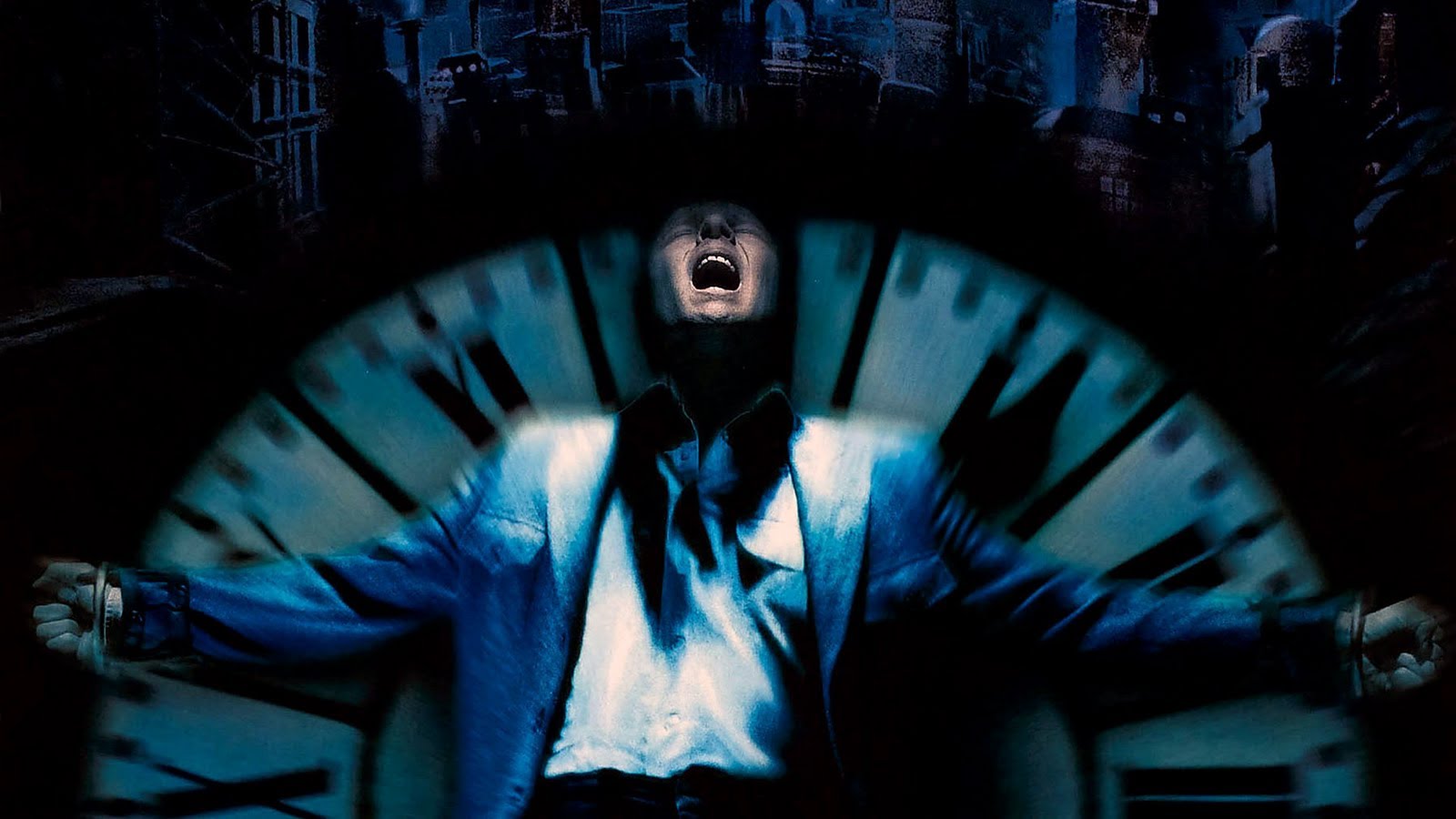
Directed by Alex Proyas, the neo-noir follows John Murdoch (Rufus Sewell) who wakes up in n a hotel bathtub, suffering from amnesia and therefore knows as much as the audience does.
He soon receives a phone call from Dr. Daniel Schreber (Kiefer Sutherland), who tells him to run because a group of men (known as the Strangers) are after him and discovers a brutally murdered corpse of a woman in his room. He flees but the Strangers are not the only ones who are trying to find him – he is also sought after by police inspector Frank Bumstead (William Hurt) as a serial killer but Murdoch cannot remember killing anybody.
He eventually discovers his own name, finds that he has a wife named Emma (Jennifer Connelly) and most importantly that he has mind powers – which the Strangers also possess. The city they all live in is in a perpetual state of darkness yet no one besides Murdoch seems to realise this.
At midnight, he watches as everyone except himself drops off as the Strangers stop time and physically rearrange the city as well as changing people’s identities and memories. The film was a box office bomb, but received mainly positive reviews and has become a cult classic.
9. Battle Royale (2000)
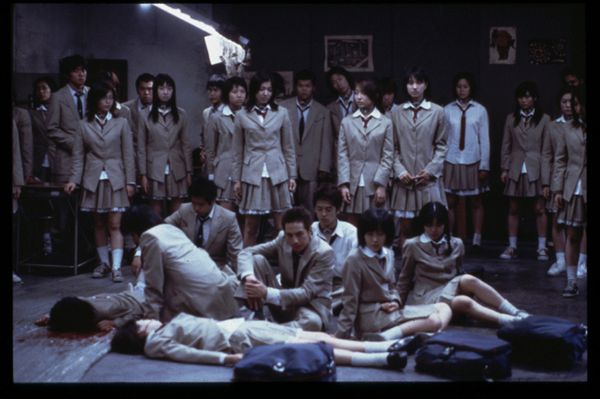
Koushun Takami’s last Japanese action thriller, written by his son, Kent, and adapted from the 1999 novel of the same name follows class 3-B during a high-school class field trip. However, while they are on the bus, they are gassed to sleep and fitted with electronic collars. They are moved to a secluded, remote island and wake up in a briefing room with an old teacher of theirs, Kitano. He explains that they have been selected for an experiment.
The class has been chosen to participate in the annual Battle Royale and are instructed that they have three days to kill each other until only one remains.
The new collars around their necks are fitted with explosives that are set to go off if they become uncooperative or enter any “danger zones”. Each student is provided a bag of food and water, a map of the island, a compass, and a weapon.
The film caused controversy both domestically and internationally. It was banned or deliberately excluded from distribution in several countries, the film was never officially released in the United States or Canada for eleven years.
However, despite the selective distribution, it received global audience, critical acclaim and a strong cult following. It is often regarded as one of Japan’s most famous films, as well as one of Fukasaku’s best ones.
This controversial and vigorously violent fable does not wholly depend on expertly choreographed fight scenes and blood, but also on the teenage melodrama underneath, where high-school politics, cliques and childish mentalities are put into a context of life or death.
While many focus on the gore, and regard it as tasteless, it is important to see that Fujiwara does not exploit violence, but rather uses it to highlight the tense moments of humanity, teamwork and determination amongst adolescent characters.
Battle Royale was nominated for nine Japanese Academy Awards , including Picture of the Year as well as receiving multiple awards from international film festivals.
The film has had a huge impact on both western and eastern cinema, having a direct influence on American filmmaker Quentin Tarantino, who has praised the film on a number of occasions, even stating that it has been the best film he had seen in the past two decades and that, “If there’s any movie that’s been made since I’ve been making movies that I wish I had made, it’s that one.” (2009).
8. The Truman Show (1998)
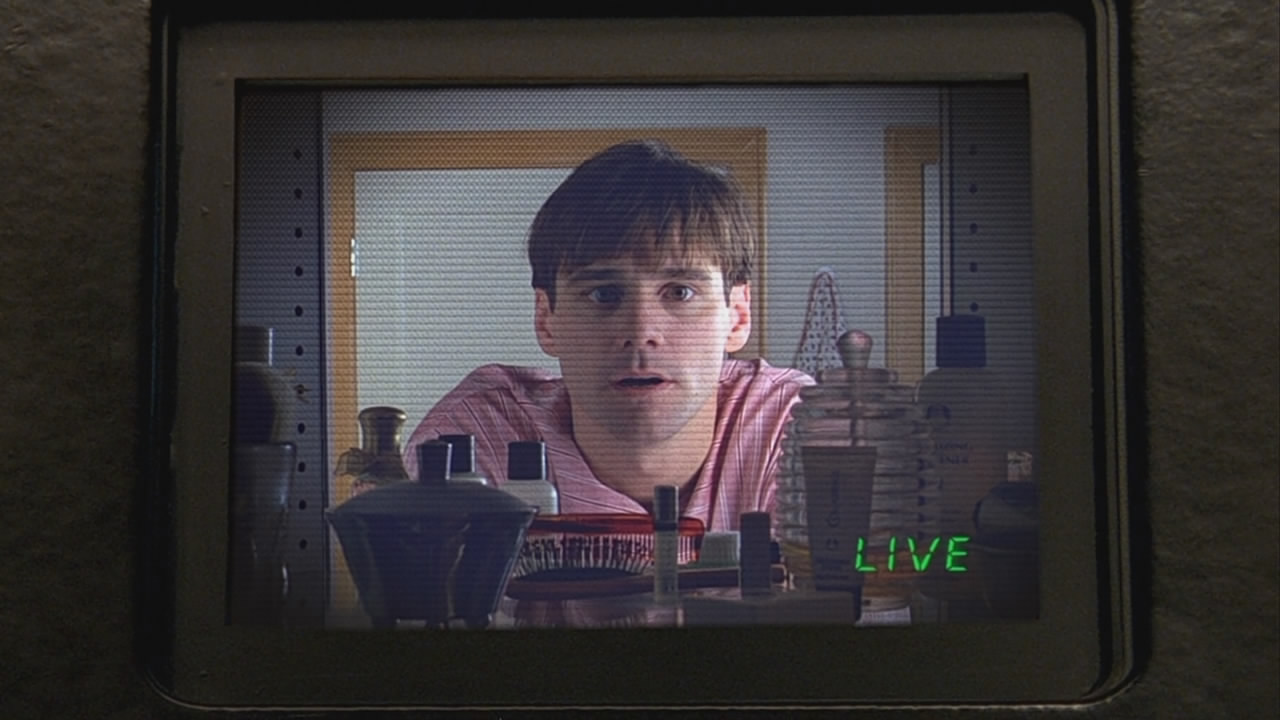
Peter Weir’s satirical comedy-drama follows Truman Burbank (Jim Carrey), a man raised by a corporation inside a simulated television show revolving around his life, which is broadcast live day and night, across the world.
Truman is unaware that he is the star of the top-rated reality show and that everything in his life is a lie. His entire life has been restricted to Seahaven, Florida, a fake city in Hollywood with thousands of cameras to film, created by Christoph (Ed Harris).
His experimental show has captured every minute of Truman’s life ever since before he was born, getting footage from the ultrasound. His purpose and love for Truman and the concept was to get something honest and real and to also discover real human emotion and behaviour, especially when he is manipulated certain situations to see how he will react and continue.
Every person he has ever interacted with has been cast; his wife Meryl (Laura Linney), is actually an actress who consistently makes impromptu product placements, his “honest” best friend Marlon (Noah Emmerich) constantly reassures Truman about strange things he witnesses, like falling stage lights, hidden rooms behind elevators and rain which selectively falls on Truman first before anything else, which all happen to be technical mishaps.
In order to discourage him from ever leaving the set, the producers have discouraged Truman from wanting to travel by instilling him with phobias through planned traumatic events, and by constantly broadcasting and printing messages of the dangers of traveling.
An honest satire of culture’s obsession with celebrities and their personal lives, Weir balances comedy and drama in telling the story of an ordinary, easy to sympathise man and his (unbeknownst to him) loss of personal freedom and privacy.